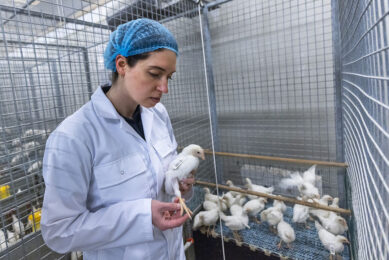EFSA: Campylobacter and Salmonella in chicken in the EU

The European Food Safety Authority (EFSA) has published the results of a survey on Campylobacter and Salmonella in chicken at slaughterhouses in the European Union.
In most EU Member States, a high prevalence of Campylobacter was found in chickens, whereas Salmonella was less frequently detected. These zoonoses are the cause of the 2 most reported food-borne diseases in humans in the EU: campylobacteriosis and salmonellosis. This was EFSA’s 6th baseline survey on food-borne bacteria carried out at EU level and the first to directly investigate the presence of Campylobacter and Salmonella in chickens at slaughter.
All Member States participating in the survey carried out in 2008 reported Campylobacter in the chickens they sampled. The samples were taken at the beginning and at the end of the slaughter line, that is respectively when the chickens arrive at the slaughterhouse and when their carcasses are chilled after slaughtering. On average, the bacterium was found in the intestines of 71% of chickens, indicating that they were already infected when alive, and on 76% of sampled carcasses, which suggests some further contamination during slaughtering. The survey shows that these figures varied greatly between Member States. The survey follows a recent opinion of EFSA’s Biological Hazards (BIOHAZ) Panel, which confirmed that poultry meat appears to be a major, if not the largest, source of campylobacter infection in humans.
The survey also says that 22 Member States reported Salmonella in the chicken carcasses they sampled. On average, 15.7% of sampled carcasses were found to be contaminated, although figures varied between Member States. Of the various types of Salmonella, 17 Member States reported the types Enteritidis and Typhimurium, which are responsible for most Salmonella infections in humans.
The aim of the survey was to provide comparable figures for all participating Member States in order to give an overview of the prevalence at slaughter of Campylobacter in chickens and of Campylobacter and Salmonella in chicken carcasses. The survey also sets out recommendations, in particular for further research on factors affecting the spread of Campylobacter in chicken meat production and on best methods for surveillance and control of Campylobacter.
Source: European Food Safety Authority (EFSA)













